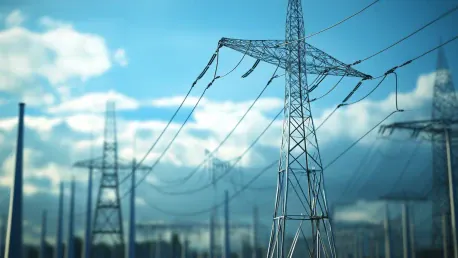The past year has witnessed a remarkable surge in clean energy employment within the United States, a trend that is largely attributable to favorable government policies designed to combat climate change. This substantial growth is exemplified by an impressive increase of 142,000 jobs in sectors such as electric vehicle (EV) and battery manufacturing, renewable energy, and related industries. This surge represents a robust 4.2% growth rate in clean energy employment, starkly contrasting with the broader economy’s job growth rate, which stands at 2%. Remarkably, clean energy jobs now account for more than half of the new employment opportunities within the energy sector, signaling a significant shift towards sustainable energy solutions.
Electric Vehicle and Renewable Energy Sectors Witness Major Job Increases
One of the pivotal sectors driving this employment boom is the electric vehicle industry, which has seen substantial investment and enthusiasm. Job increases in this sector have been bolstered by growing consumer demand for electric vehicles and advancements in battery technology. Renewable energy, specifically solar and wind energy, has also exhibited considerable growth. Solar energy jobs have increased by an impressive 5.3%, while the wind energy sector has seen a 4.5% rise in employment. This upturn in jobs is largely driven by heightened awareness and efforts to transition to clean energy sources to mitigate the impacts of climate change.
The growth in these sectors is not only limited to the manufacturing and development of clean energy products but also extends to the construction phase of various renewable energy projects. A recent report has introduced a new tracking metric for construction jobs related to clean energy manufacturing and supply chains, identifying 28,000 jobs in this segment. These positions primarily involve the construction of facilities such as solar and battery factories and offshore wind ports. This new tracking provides a more comprehensive picture of the employment landscape within the clean energy industry, broadening the understanding of how these jobs contribute to the national economy.
Impact of Policy and Investment on Clean Energy Employment
The surge in clean energy employment can be directly traced back to the enactment of the 2022 Inflation Reduction Act, a landmark piece of legislation aimed at spurring investment in renewable energy projects and incentivizing emission reduction strategies. This act has been instrumental in fostering a conducive environment for the growth of clean energy jobs by providing the necessary financial incentives and regulatory support. As a result, a wider array of clean energy projects have gained momentum, leading to increased employment opportunities across the sector. States like Idaho, Texas, and New Mexico have been standout performers in this regard, with Idaho experiencing a noteworthy 7.7% increase in clean energy job growth.
This policy-driven job growth is a clear indicator of the crucial role that governmental initiatives play in the transition towards a more sustainable energy economy. The investments encouraged by such policies have not only created jobs but have also accelerated the shift towards renewable energy sources. This is crucial for meeting national and global climate goals and represents a significant step towards a more sustainable future. The overarching trend in clean energy employment growth highlights the dynamic and transformative nature of the energy industry in the U.S., underscoring the lasting impact of strategic policy decisions and dedicated investment in the renewable sector.
Broader Economic Implications and Future Outlook
Over the past year, the United States has seen a significant rise in clean energy employment, thanks largely to government initiatives aimed at addressing climate change. This surge is highlighted by a notable increase of 142,000 jobs in areas like electric vehicle and battery manufacturing, renewable energy, and related industries. This marks a robust 4.2% growth rate in clean energy employment, which is particularly impressive when compared to the general economy’s job growth rate of 2%. Interestingly, clean energy jobs now constitute over half of the new employment opportunities in the energy sector. This points to a marked shift towards sustainable energy solutions, driven by policies that favor environmentally friendly industries. This trend not only supports the fight against climate change but also showcases the potential for economic growth within the clean energy sphere. The considerable job growth in these sectors underscores the increased adoption of renewable technologies and represents a crucial step toward a sustainable energy future for the nation.









